Yaki udon is a wonderfully easy stir fried noodle dish with a mix of vegetables, meat (though you can skip) and a flavorful soy-based sauce. It's quick, tasty and perfect for any night.
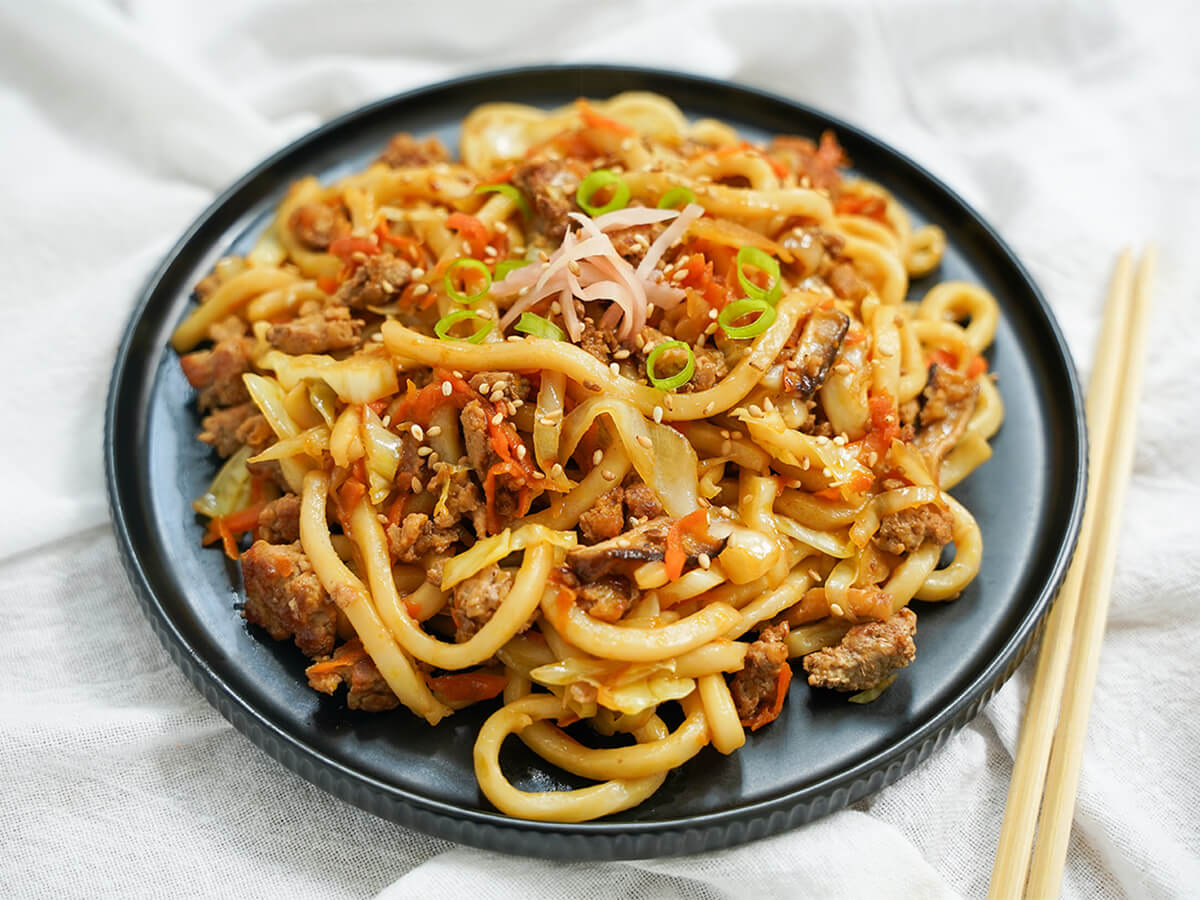
This post may contain affiliate links, where we earn from qualifying purchases. See more details in the policy page.
As you may have seen me mention before, various Japanese dishes make it into regular rotation in our house with things like chashu pork ramen being a favorite on cooler days and sashimi, rolls and chirashi sushi more on warmer days.
We're also big fans of short rib beef udon but it very much feels like a cold weather dish. These stir fry noodles, meanwhile, are perfect any time of year. As well as being tasty, they are so quick to make which makes them ideal on busy nights.
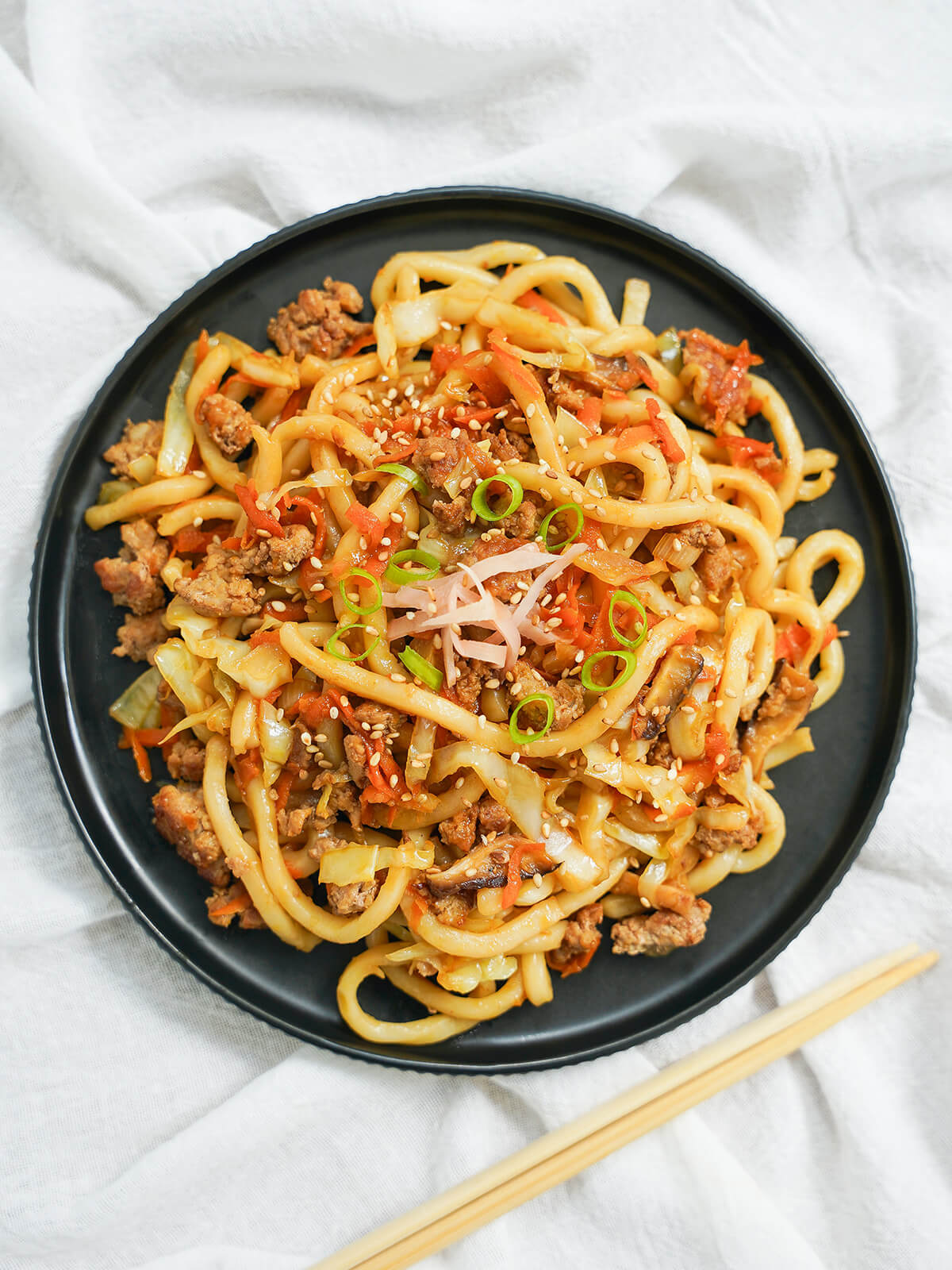
Origins of yaki udon
Yaki udon is a variation of the dish yaki soba made with soba noodles. Yaki soba has it's origins in Chinese cuisine, particularly chow mein, along with Japanese okonomiyaki. The dish is sometimes dated back to the 1930s, but it's slightly debated.
The name "yaki soba" means "grilled noodles" but the dish is actually stir fried. It started as a street food dish and combined noodles, vegetables and meat with a flavorful sauce. The dish stretches out a small amount of meat so was ideal when some items were scarce or expensive. These days, it's a favorite home cooked dish.
Yaki udon is generally said to date back to shortly after WWII and was created due to a shortage of soba noodles. Udon noodles were more readily available so were added to the dish instead.
In general, yaki udon (or yakiudon) has a slightly simpler soy-based sauce that's sometimes flavored with sake, mirin and/or dashi. Yakisoba sauce, meanwhile, includes soy but typically also has ketchup, sugar, oyster sauce and Worcestershire sauce.

What are udon noodles?
Udon noodles are relatively thick, white noodles that are a staple in Japanese cuisine. They are believed to have come from China originally but date back to likely the 600s.
Udon noodles are made from just wheat flour, water and a bit of salt and are gently chewy in texture and mild flavored, making them a great blank canvas for a wide variety of dishes.
We're big fans of the slightly chewy texture and mild flavor compared to soba noodles, made with buckwheat. Though as with many noodles, I highly recommend trying to find fresh if you can as the flavor and for these in particular, texture, is that bit better.
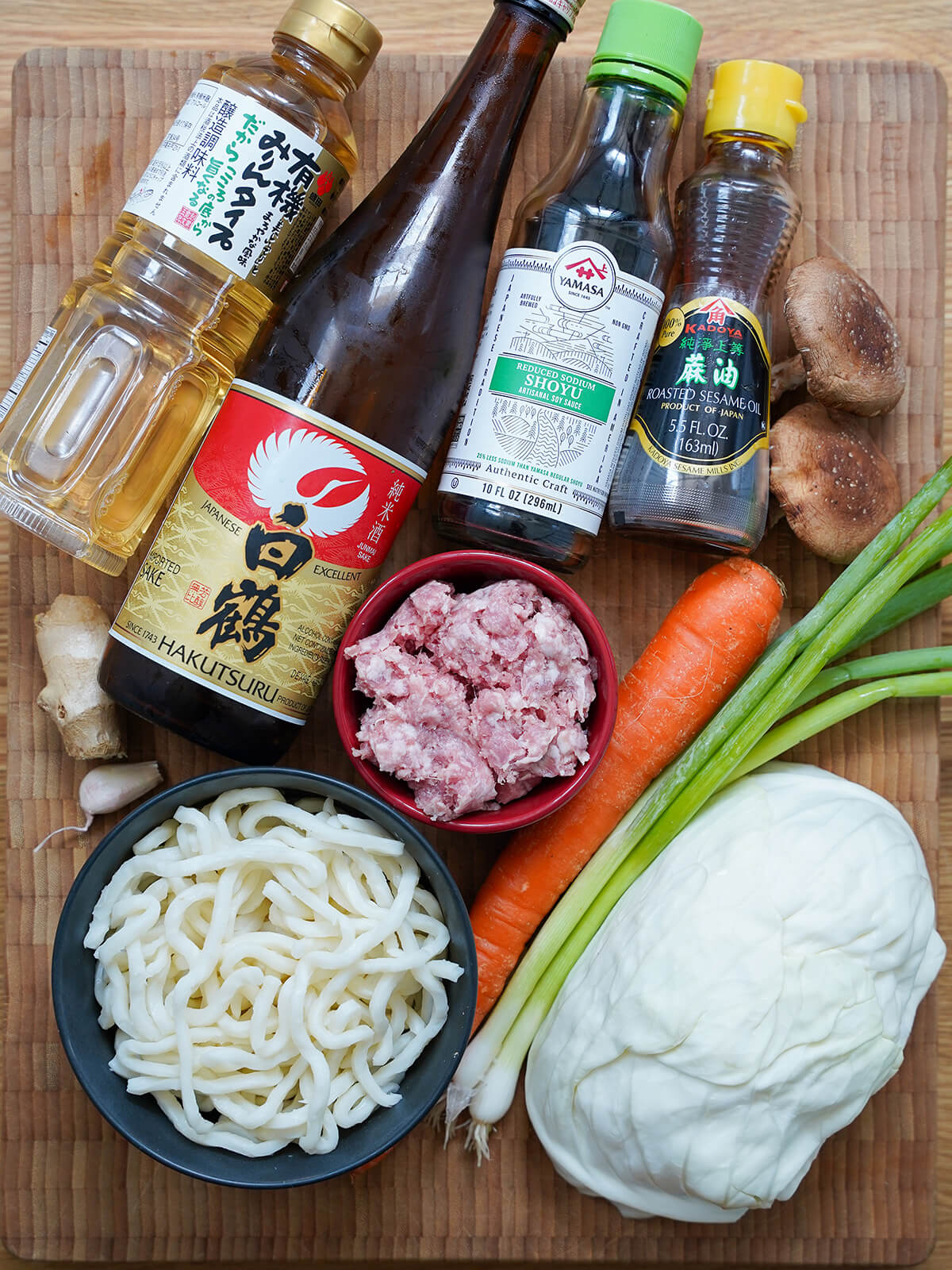
Yaki udon ingredients and variations
This dish is highly flexible though there are a few key components and some typical ingredients. But from there, you can change things up to taste and what you have.
- Udon noodles - these are, after all, what gives the dish it's name! As mentioned above, try to look for fresh noodles, if at all possible, or frozen which both tend to be better than other options. Most Asian markets will stock them.
- Vegetables - these can vary and you can adapt to taste, but a typical mix is cabbage, carrots and green onion (spring onion). Mushrooms like shitake are another common option. These give a good mix of flavor and color.
- Protein - the most common protein is pork, most often thin slices of pork belly, but you can go with many others. Thinly sliced beef or chicken are other options, or chunks of tofu to make a vegetarian version. You could also use shrimp (prawns) or ground meat as I have here. I generally make this will ground pork (pork mince) as it's easy to use, readily available and gives a great flavor base.
- Sauce - a simple soy-based sauce is most typical and here I use soy, mirin and sake for flavor and a salty, umami base with a gentle sweet to take the edge off. I usually add garlic and ginger for a bit of extra flavor but this is less typical so feel free to skip if you prefer.
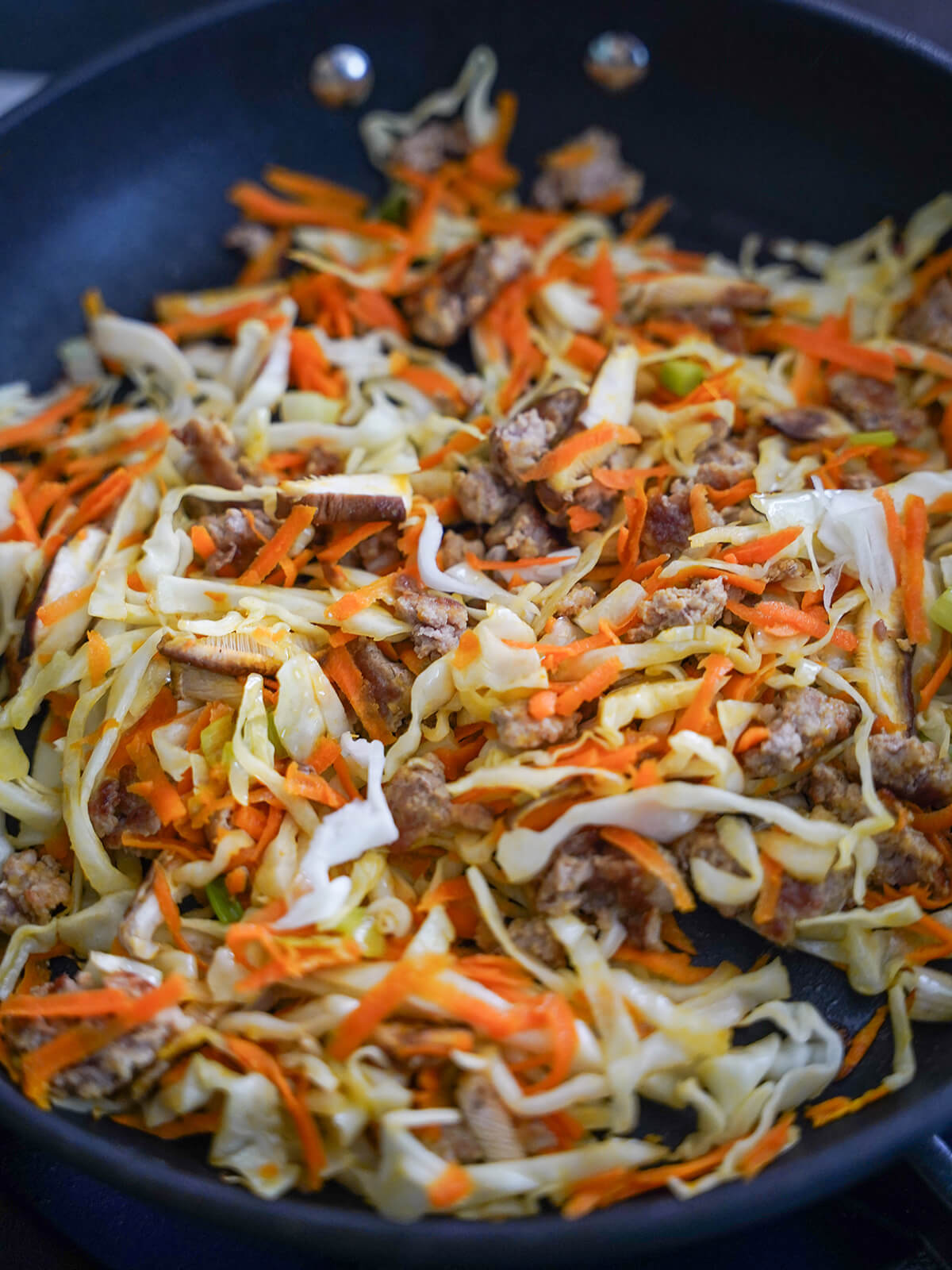
Typically, you would chop the cabbage into a small-ish dice and cut the carrots in batons. I prefer to shred the cabbage, coarsely grate the carrot and slice the mushrooms. This way, everything is similarly shaped, plus grating the carrots is quicker.
Top tip: prepare ahead
This cooks quickly, so you want to have everything ready to go before you start cooking. So cut all the vegetables, have the sauce ingredients measured and combined, then have the noodles ready as well. Then you cook, stir and serve!
You have a few choices in how you garnish this dish before serving. A little pickled ginger is common and pairs well. Typically you use the red version but I just had the pink as you use with sushi here. A few finely chopped green onions (the green part from using in the dish) and some toasted sesame seeds work well too. Or, of course, you can serve just as it is.
Since this dish has noodles, vegetables and protein, it's really perfect as a meal in itself. However if you like, you could add a bowl of miso soup on the side, for example, or have some small side dishes like sunomono cucumber salad or Japanese spinach salad with sesame, horenso gomaae.
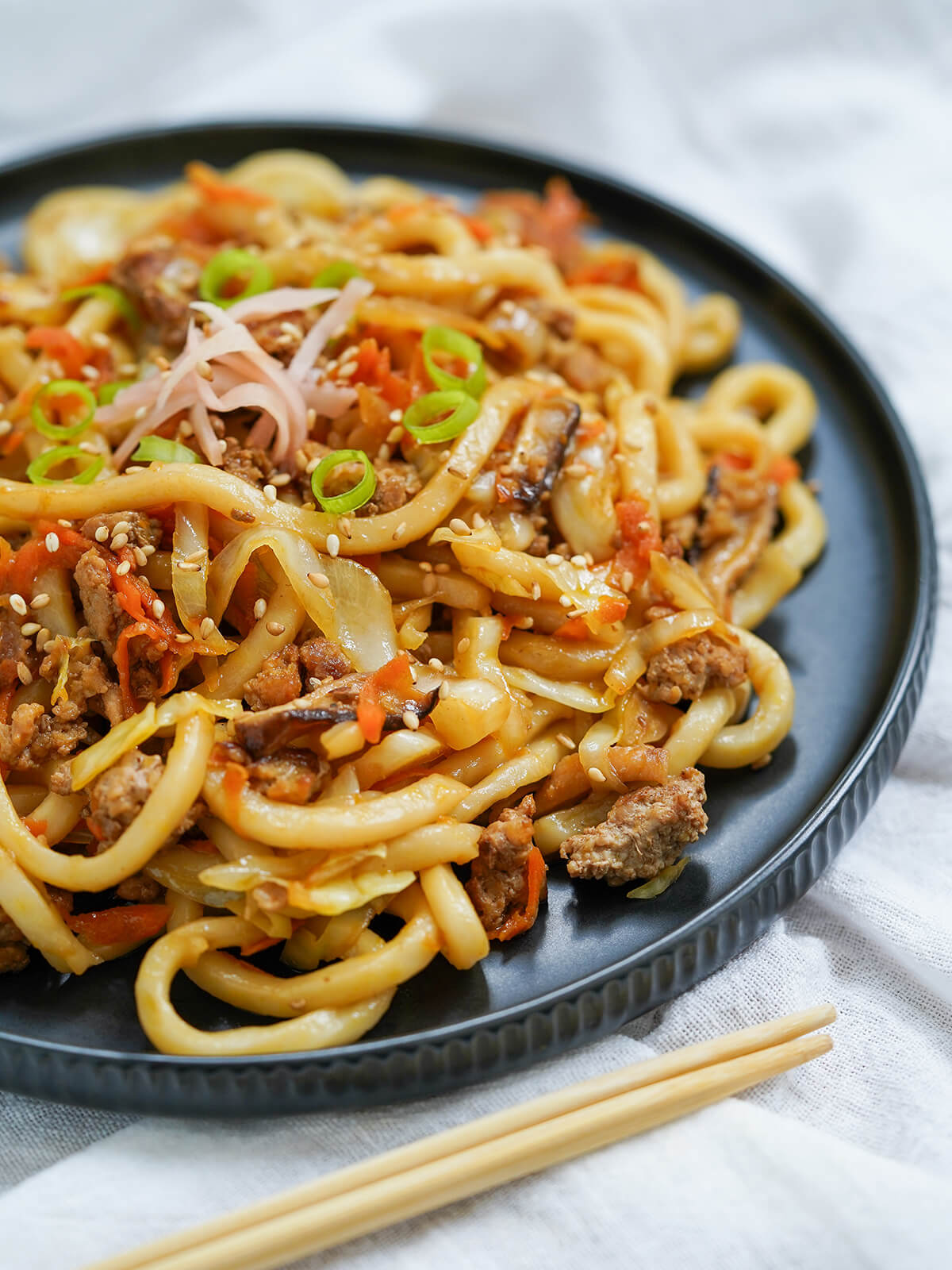
Yaki udon is such a great quick and easy dish that's flavorful, adaptable and packed with a great mix of ingredients. It's perfect for busy nights, or to clear out the fridge. Or really any reason as it's a tasty dish well worth enjoying often.
Try these other tasty quick meals:
- Crab pasta - a tasty light pasta dish with only a handful of ingredients that still feels that bit special.
- Mussels in cream sauce - another super simple seafood dish that has a flavorful, indulgent-feeling sauce, perfect to mop up with some bread.
- Nasi goreng, Indonesian fried rice - a great use of leftover rice, with a flavorful soy-based sauce.
- Plus get more Japanese recipes and main dishes in the archives.
Yaki udon
Ingredients
- 2 cups shredded cabbage
- 1 cups grated carrot
- 4 shitake mushrooms
- 3 green onions
- 2 teaspoon crushed garlic optional
- 2 teaspoon grated ginger optional
- ½ tablespoon vegetable oil or other neutral oil
- ½ lb ground pork pork mince, see notes
- 14 oz fresh udon noodles 14oz is 2 individual packets
For sauce
- ¼ cup soy sauce
- 3 tablespoon sake
- 2 tablespoon mirin
- 2 teaspoon sesame oil
To garnish (optional, or use others, to taste)
- ½ tablespoon toasted sesame seeds
- ½ tablespoon pickled ginger
Instructions
- Shred the cabbage finely, coarsely grate the carrot and thinly slice the mushrooms, removing the tougher stems. Peel the outer layer from the green onions then thinly slice the white and light green part. Have the crushed garlic and grated ginger ready. Combine the soy, sake and mirin for the sauce.
- Warm a wok or wide saute pan over a medium-high heat then once warm, add the oil then add the pork into the oil, pressing into a relatively thin layer. Leave it to get a good sear then flip it over to sear the other side.
- Break up the meat with a spatula then add the green onion, garlic and ginger (if using), cook briefly so they are aromatic but not burning, then add the cabbage and carrot. Cook, stirring now and then, for around 2 - 3 minutes until the vegetables are starting to soften. Add the shitake mushrooms and cook a minute or two more.
- Add the noodles to the wok/pan, separating them as you add as best you can. Mix through briefly then pour over the soy-sake-mirin sauce. Use tongs to toss the noodles, meat and vegetables so they become coated in the sauce, particularly the noodles. After a couple minutes, the sauce will be largely absorbed. Add the sesame oil, toss gently to mix through then remove from heat.
- Divide between plates to serve and top with toasted sesame seeds, some finely cut green part of the green onions and thinly sliced pickled ginger (or none/other garnishes to taste).
Video
Notes
Nutrition
See some of my favorite cooking tools and ingredients in the Caroline's Cooking Amazon store.
Remember to pin for later!
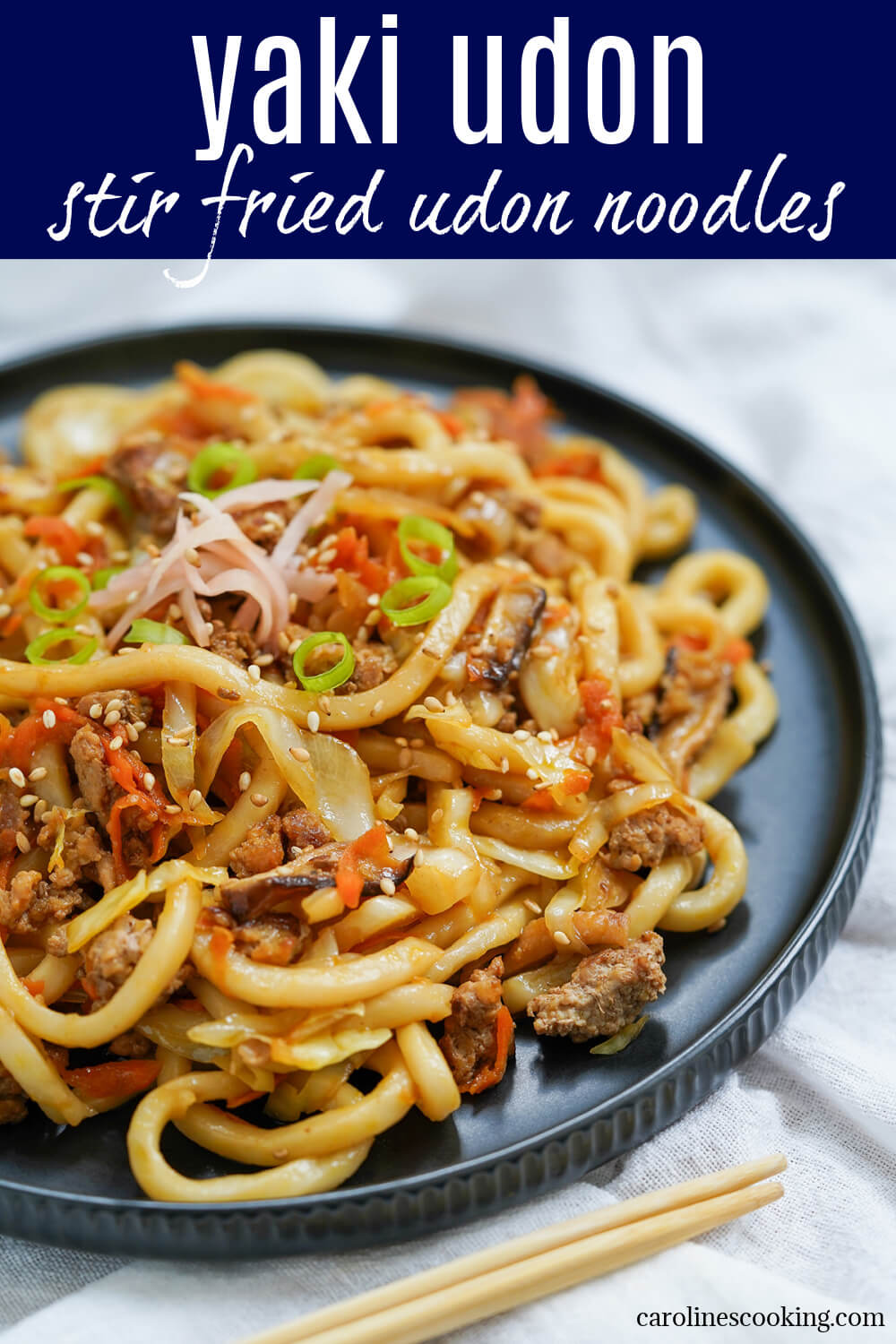

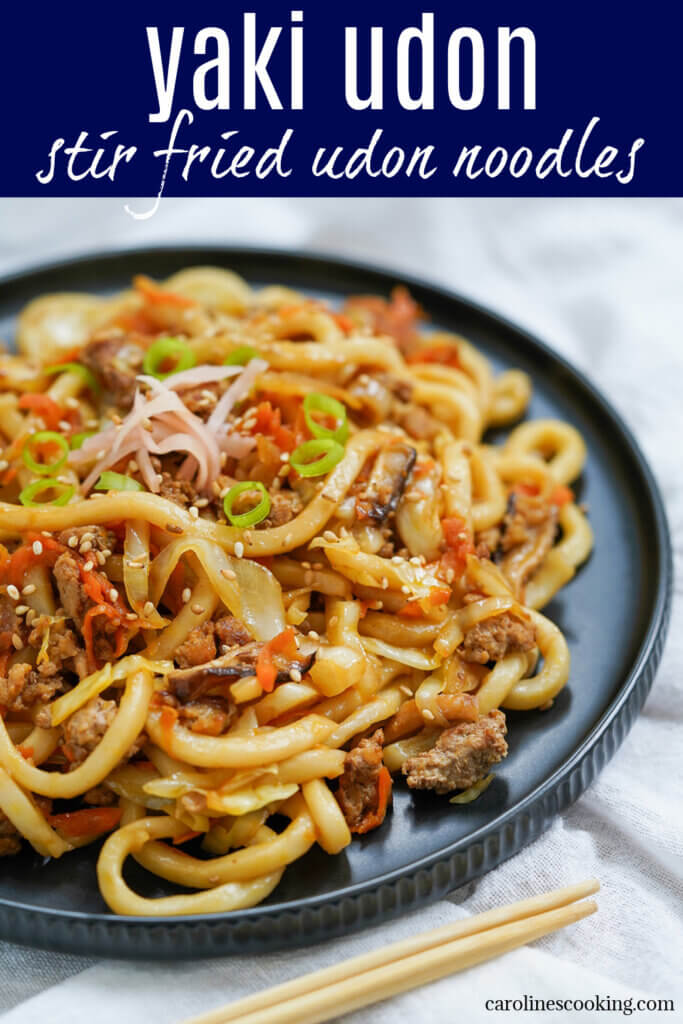
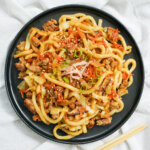
Leave a Reply